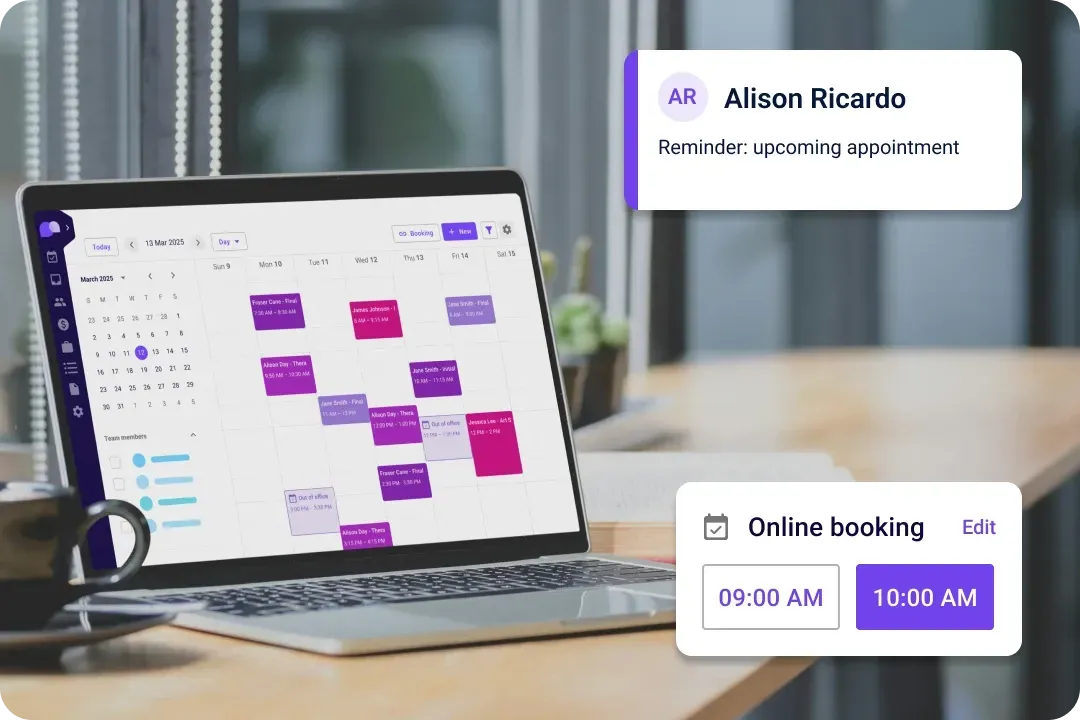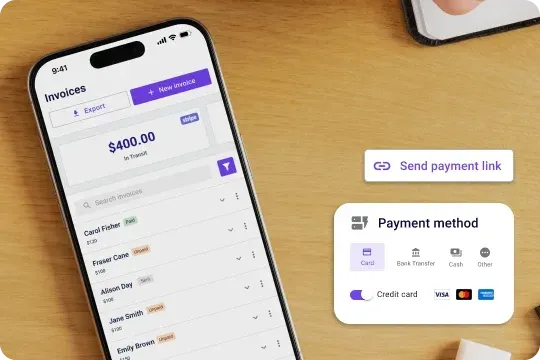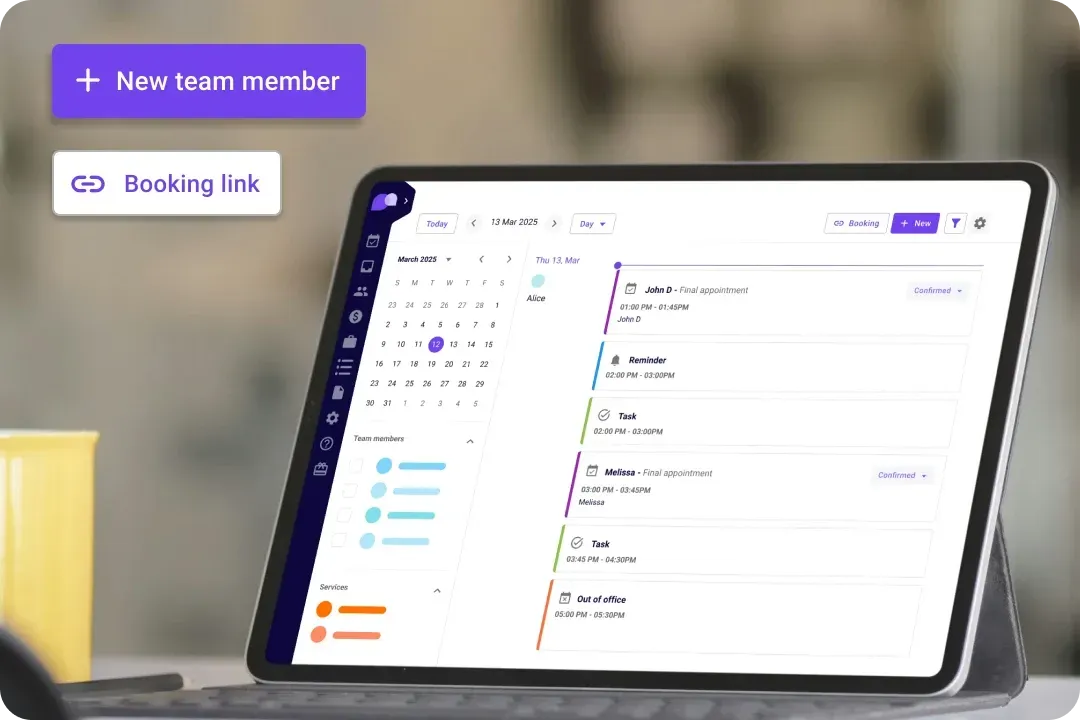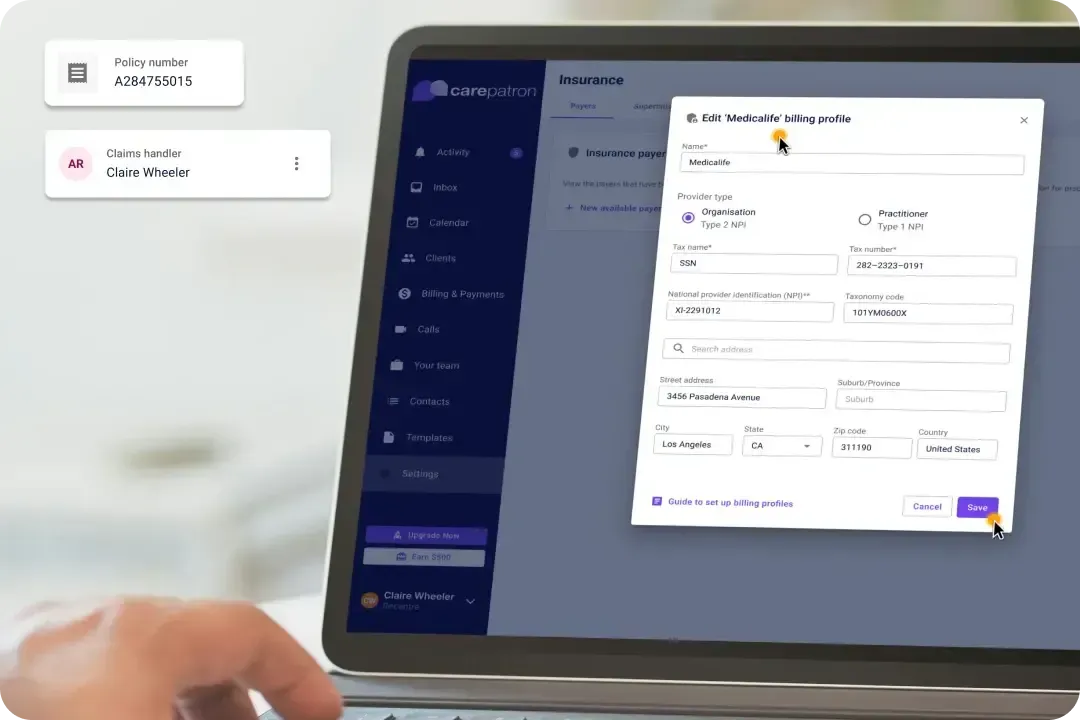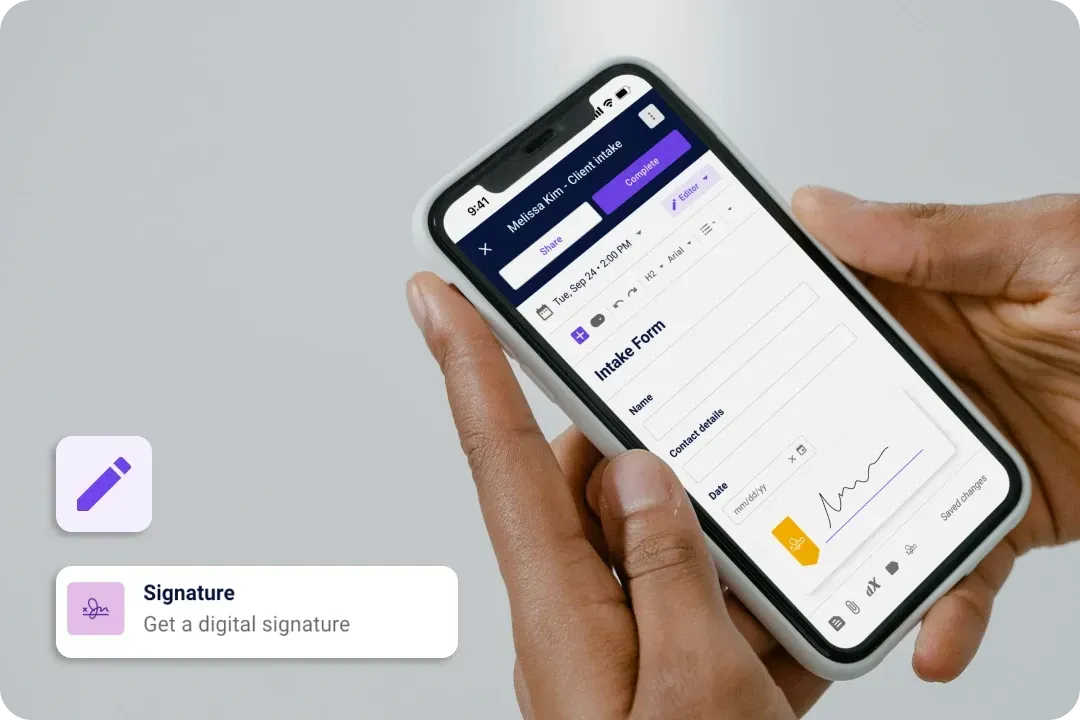Expand your reach with telehealth
See more patients, anywhere. Carepatron's HIPAA-compliant telehealth platform handles the technical details so you can connect with patients. No downloads, no complicated setup, just reliable care.
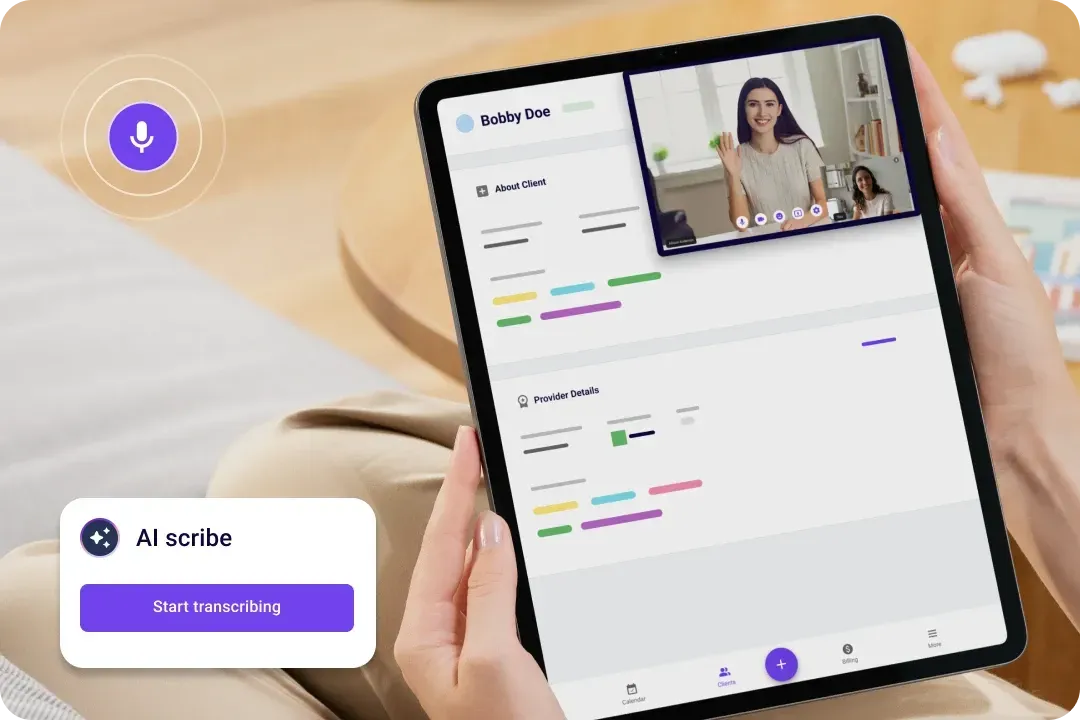
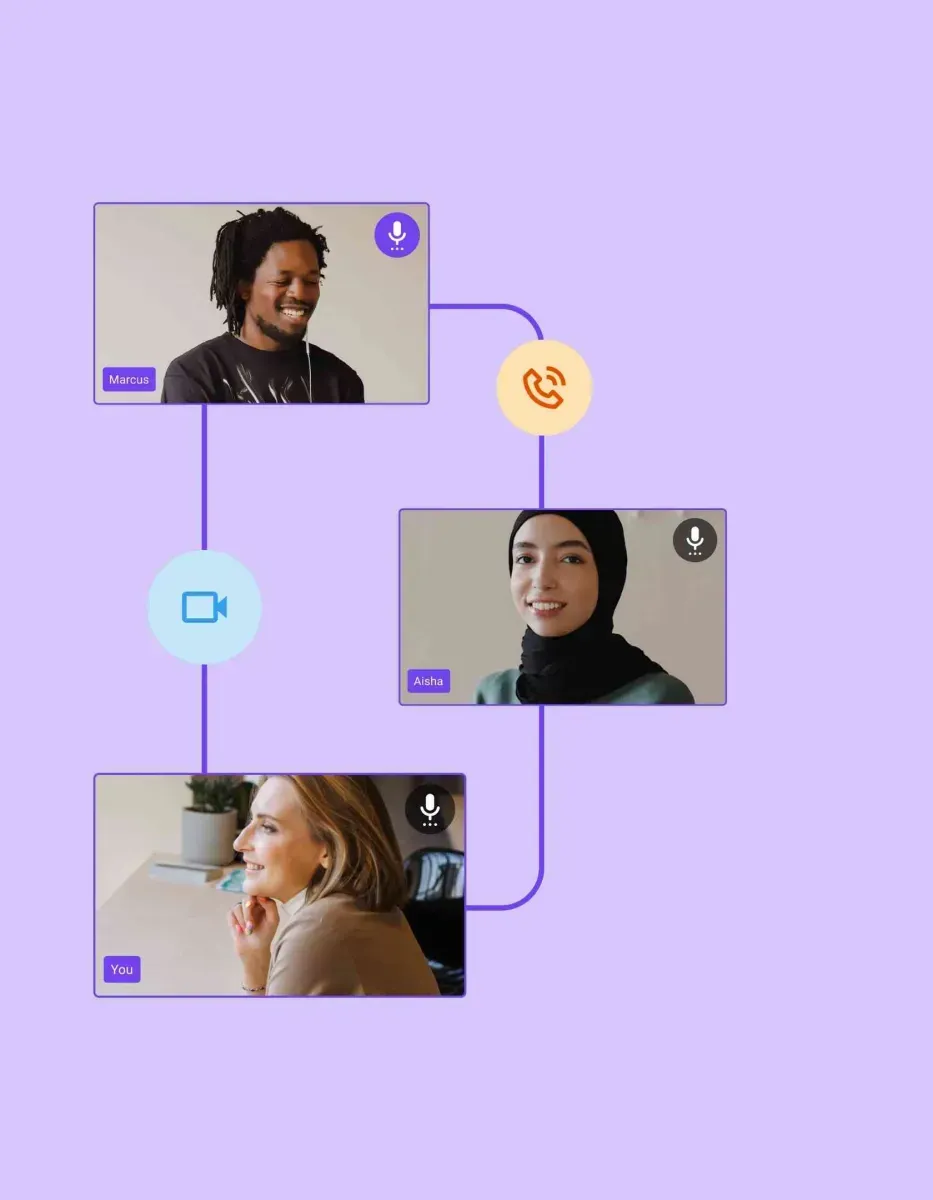
The perfect telehealth software for your healthcare team
Think of our free telehealth software as a do-it-all tool for your team. It makes your job easier and helps you care for your patients better. Simple, effective, and ready for anything.

Use it anywhere
Our telehealth software empowers patients to consult with their doctors from the comfort of their homes or any location they choose. This flexibility ensures that geographical barriers do not hinder access to healthcare.

Quick and easy
Designed for efficiency, our platform saves significant time for both doctors and patients. Streamlining the consultation process minimizes wait times and administrative delays.

Better care for patients
Enhancing patient satisfaction is at the core of our telehealth service. By facilitating smoother doctor-patient interactions and making healthcare more accessible, we contribute to a more positive healthcare experience.

Saves money
Our telehealth software is a solution that makes healthcare more affordable for patients and providers. By reducing the need for physical office visits, we help save on transportation costs and minimize overhead expenses.

Carepatron’s telehealth platform features
Our features make you feel like you're right there with your patients. You can talk clearly, share files easily, and manage your day smoothly.

See and talk clearly
Our platform offers high-quality video and audio capabilities, simulating an in-person consultation experience. This clarity in communication ensures that consultations are effective and personal.

Safe file sharing
With robust security measures in place, our software facilitates the secure exchange of files between doctors and patients. This ensures that sensitive health information is protected, maintaining patient confidentiality and trust.

Book appointments easily
Our user-friendly appointment scheduling feature makes managing consultations hassle-free for healthcare providers and patients. We help reduce administrative burdens and improve the overall healthcare experience.

Message quickly
Our telehealth platform enables instant messaging, allowing doctors to provide advice or answer patient questions promptly. This feature ensures continuous communication between doctors and patients.
Trusted by more than 100,000 practitioners

"It’s so easy to connect with my staff"
CLAIRE, PHYSICAL THERAPIST

"Carepatron saves me 2 hours everyday"
AEGEUS L, HEALTH COACH

"My team loves how simple it is to use"
ANDREA MAGNUS, PRACTICE MANAGER
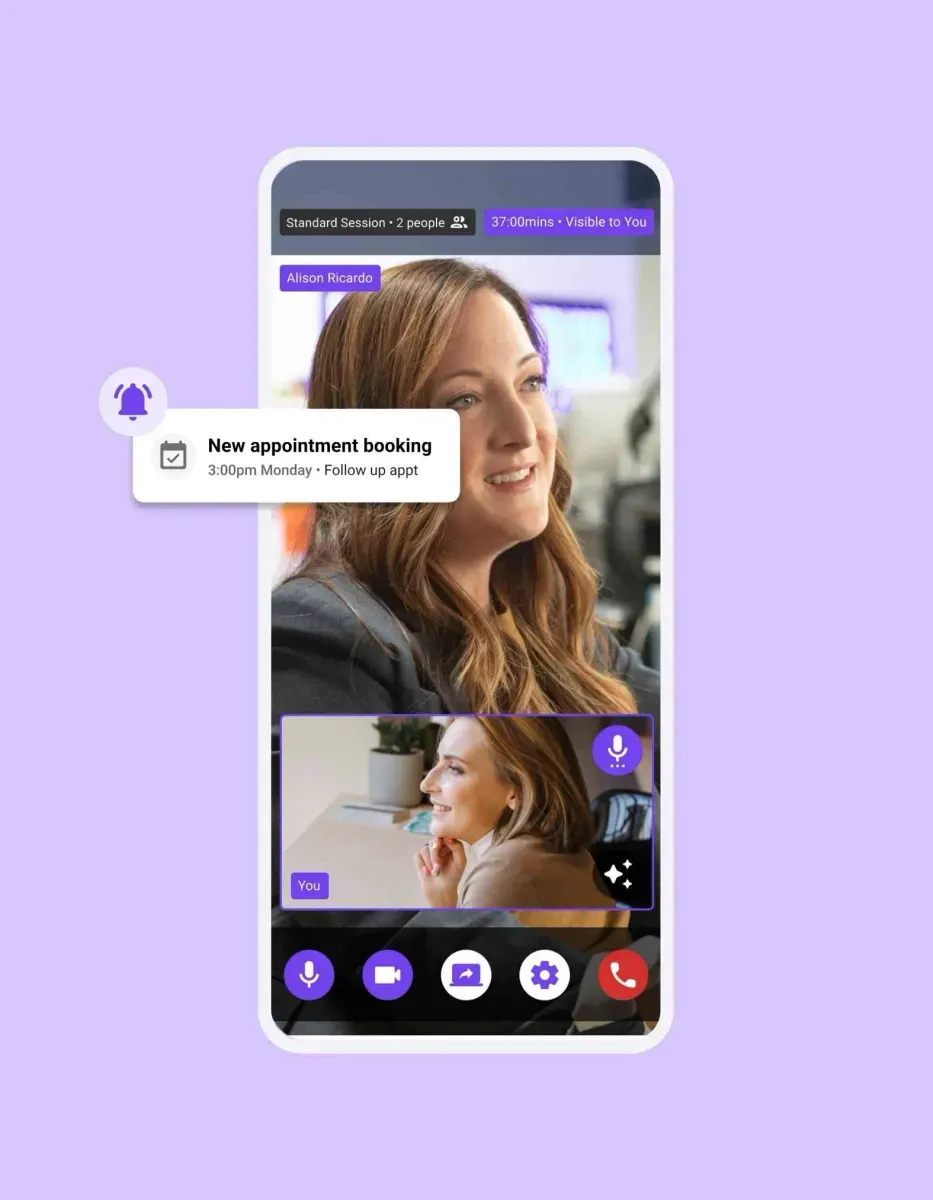
The benefits of our telemedicine software
Telemedicine means getting great care without the hassle of travel or waiting rooms. It’s care that fits your schedule.

Total control with telehealth
You and your patients can access appointments, consultations, and follow-ups from anywhere in the world. Our telehealth feature offers secure video conferencing and messaging for reliable virtual care.

No waiting around
Telemedicine eliminates the need for travel and waiting rooms, offering a more convenient and time-efficient healthcare experience. Patients can receive care from anywhere, fitting consultations into their schedules.

Care reaches everywhere
Our telehealth solution extends healthcare access to remote and underserved areas, ensuring that distance is no longer a barrier to receiving quality medical advice and care.
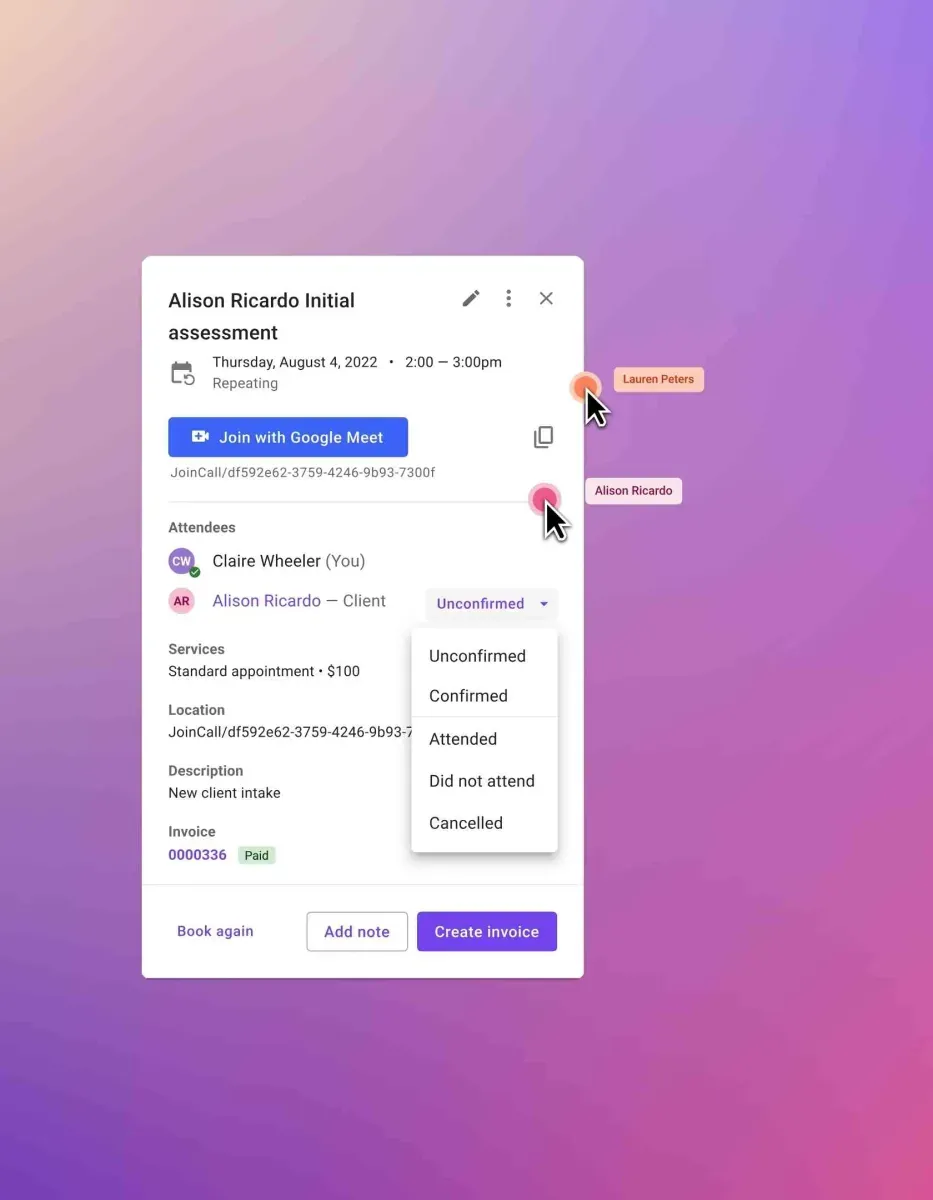
The telemedicine software for every healthcare team
Experience our telemedicine software, free and flexible. It fits what every team needs, big or small. It's the one tool that truly works for everyone.

Cheaper
By saving on travel and associated costs, telemedicine offers a more economical option for receiving healthcare. This cost-effectiveness makes medical services more accessible to a broader range of people.

Talk more
The ease of communication facilitated by telemedicine encourages more frequent interactions between doctors and patients. This increased communication helps build stronger relationships and ensures better monitoring of health conditions.

Access anytime
Whether via desktop or mobile, you can access our software anytime, anywhere. Never miss a beat, and stay on top of patient care with our user-friendly interface.

Just right for one doctor
Our telehealth service is perfectly tailored for solo practitioners, offering a simple, effective, and comprehensive solution that enhances the quality of care.

Brief breakdown: how to use our telemedicine software
Starting with our software is straightforward. Here's how to begin offering or getting care with just a few steps.

Great for a group
Our platform facilitates seamless collaboration and communication for healthcare teams. It supports multiple providers working together smoothly, ensuring patient care is coordinated and efficient.

Special features for specialists
We offer specialized tools that cater to the unique requirements of different medical specialties. These custom features ensure that specialists can provide targeted care with precision and efficiency.

Works for hospitals
Our telehealth software is scalable and secure, making it suitable for hospitals managing large volumes of patients. It streamlines patient tracking, consultation scheduling, and information sharing.

Easy as 1-2-3
Our software is meticulously crafted with a user-friendly interface, ensuring ease of use for individuals without a technical background. By reducing the time dedicated to training, you can allocate more time and attention to delivering exceptional patient care.
Frequently asked questions
EHR and practice management software
Get started for free
*No credit card required
Free
$0/usd
Unlimited clients
Telehealth
1GB of storage
Client portal text
Automated billing and online payments





